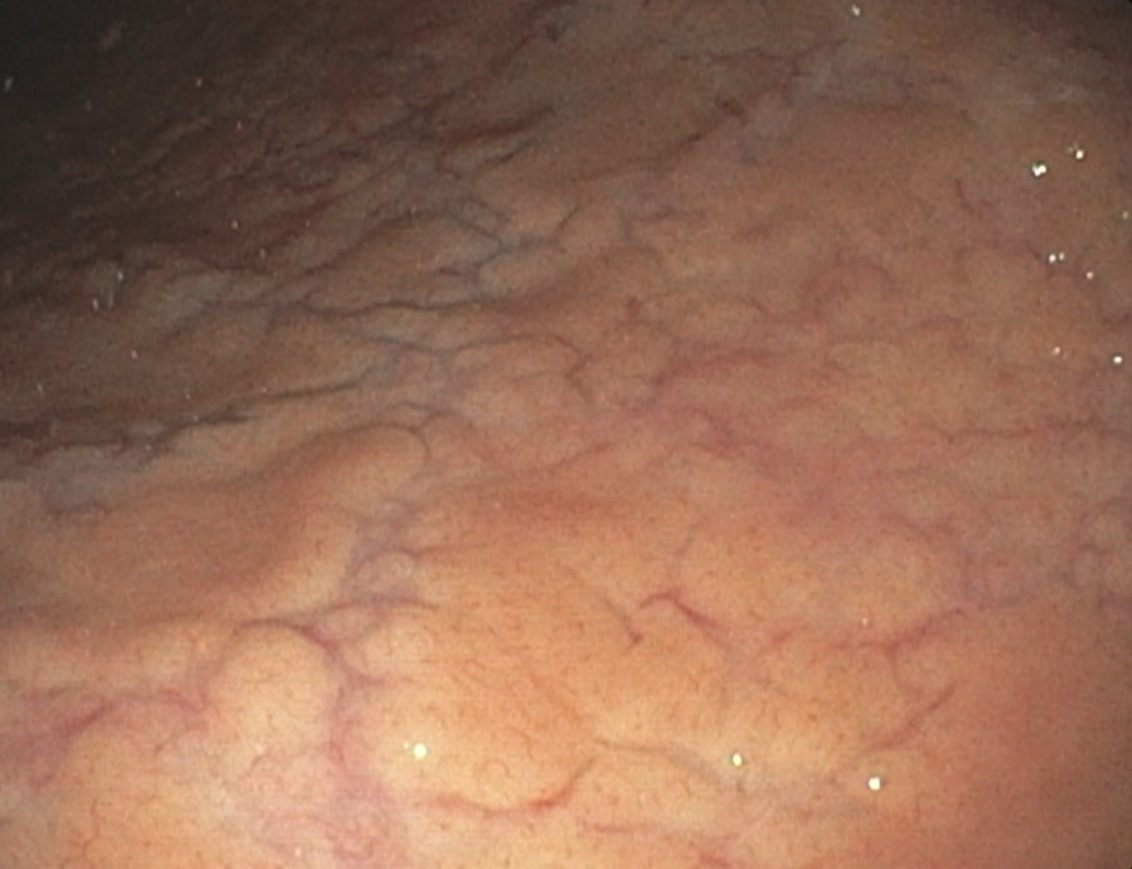Back
Poster Session C - Monday Afternoon
C0718 - Collagenous Gastritis: A Rare Cause of Anemia
Monday, October 24, 2022
3:00 PM – 5:00 PM ET
Location: Crown Ballroom
- BH
Brett Hughes, MD
Creighton University
Phoenix, AZ
Presenting Author(s)
Brett Hughes, MD, Chinonso Ilo, MD, Subhash Chandra, MD
Creighton University, Phoenix, AZ
Introduction: A relatively common cause of gastrointestinal symptoms including abdominal pain and diarrhea is microscopic colitis. Much less commonly seen is the related disorder collagenous gastritis, which relies on pathology and high clinical suspicion for diagnosis. We report on a case of a patient with this rare finding.
Case Description/Methods: A 32-year-old male with a past medical history of achalasia status post myotomy presented with symptomatic normocytic anemia. His initial work up was significant for a hemoglobin of 5g/dL with reported use of non-steroidal anti-inflammatory drugs (NSAID). An esophagogastroduodenoscopy (EGD) showed atypical gastropathy with gross cobblestoning in the gastric body. Pathology showed chronic gastritis with focal gastric intestinal metaplasia, normal duodenal mucosal biopsies, and celiac disease serology was negative. Repeat EGD with gastric mapping demonstrated chronic gastritis, no intestinal metaplasia, negative H. pylori. Trichome stain highlighted increased subepithelial collagen layer which was confirmed by a gastrointestinal pathologist, consistent with collagenous gastritis. Colonoscopy was normal; colon biopsies were not taken as patient was asymptomatic. He was started on iron supplementation and remains well.
Discussion: Collagenous enteritides are a class of gastrointestinal disorders encompassing collagenous colitis, sprue, and gastritis. While collagenous colitis is relatively common, collagenous gastritis remains very rare. Typical symptoms include abdominal pain, nausea, diarrhea, and anemia. The most common endoscopic findings include gastric nodularity in the gastric body, erosions, and erythema. The diagnosis depends on pathologic findings of subepithelial infiltration with chronic inflammatory cells in the lamina propria, as well as deposition of collagen bands greater than 10 microns in thickness. The pathogenesis remains unclear, but medications like NSAIDs as well as smoking have been implicated. It is also associated with several autoimmune diseases including Sjogren’s and ulcerative colitis, causing postulation that there may be overexpression of HLA DR by epithelial cells and CD25 positive cells. There is currently no established therapy, and management is usually supportive care. Our case highlights the importance of a high level of suspicion for this rare disease, and pursuit of accurate diagnosis in the face of clinical perplexity. Likely etiology in our case appears to NSAIDs use which is known trigger for collagenous colitis.

Disclosures:
Brett Hughes, MD, Chinonso Ilo, MD, Subhash Chandra, MD. C0718 - Collagenous Gastritis: A Rare Cause of Anemia, ACG 2022 Annual Scientific Meeting Abstracts. Charlotte, NC: American College of Gastroenterology.
Creighton University, Phoenix, AZ
Introduction: A relatively common cause of gastrointestinal symptoms including abdominal pain and diarrhea is microscopic colitis. Much less commonly seen is the related disorder collagenous gastritis, which relies on pathology and high clinical suspicion for diagnosis. We report on a case of a patient with this rare finding.
Case Description/Methods: A 32-year-old male with a past medical history of achalasia status post myotomy presented with symptomatic normocytic anemia. His initial work up was significant for a hemoglobin of 5g/dL with reported use of non-steroidal anti-inflammatory drugs (NSAID). An esophagogastroduodenoscopy (EGD) showed atypical gastropathy with gross cobblestoning in the gastric body. Pathology showed chronic gastritis with focal gastric intestinal metaplasia, normal duodenal mucosal biopsies, and celiac disease serology was negative. Repeat EGD with gastric mapping demonstrated chronic gastritis, no intestinal metaplasia, negative H. pylori. Trichome stain highlighted increased subepithelial collagen layer which was confirmed by a gastrointestinal pathologist, consistent with collagenous gastritis. Colonoscopy was normal; colon biopsies were not taken as patient was asymptomatic. He was started on iron supplementation and remains well.
Discussion: Collagenous enteritides are a class of gastrointestinal disorders encompassing collagenous colitis, sprue, and gastritis. While collagenous colitis is relatively common, collagenous gastritis remains very rare. Typical symptoms include abdominal pain, nausea, diarrhea, and anemia. The most common endoscopic findings include gastric nodularity in the gastric body, erosions, and erythema. The diagnosis depends on pathologic findings of subepithelial infiltration with chronic inflammatory cells in the lamina propria, as well as deposition of collagen bands greater than 10 microns in thickness. The pathogenesis remains unclear, but medications like NSAIDs as well as smoking have been implicated. It is also associated with several autoimmune diseases including Sjogren’s and ulcerative colitis, causing postulation that there may be overexpression of HLA DR by epithelial cells and CD25 positive cells. There is currently no established therapy, and management is usually supportive care. Our case highlights the importance of a high level of suspicion for this rare disease, and pursuit of accurate diagnosis in the face of clinical perplexity. Likely etiology in our case appears to NSAIDs use which is known trigger for collagenous colitis.

Figure: Endoscopic view of the gastric body in collagenous gastritis.
Disclosures:
Brett Hughes indicated no relevant financial relationships.
Chinonso Ilo indicated no relevant financial relationships.
Subhash Chandra indicated no relevant financial relationships.
Brett Hughes, MD, Chinonso Ilo, MD, Subhash Chandra, MD. C0718 - Collagenous Gastritis: A Rare Cause of Anemia, ACG 2022 Annual Scientific Meeting Abstracts. Charlotte, NC: American College of Gastroenterology.
